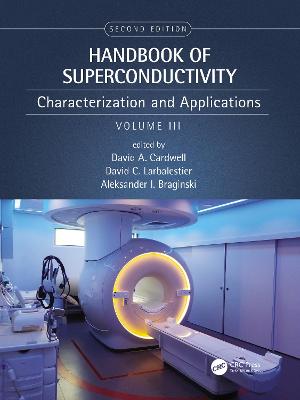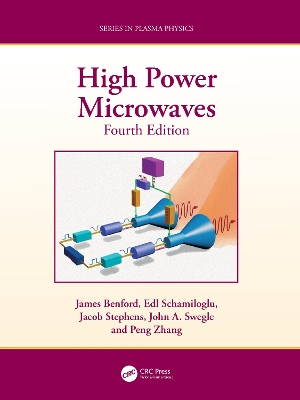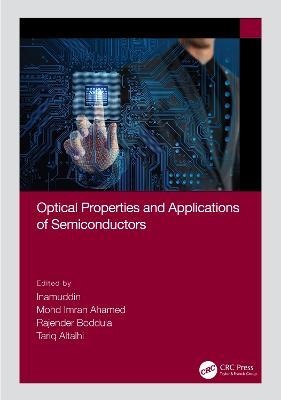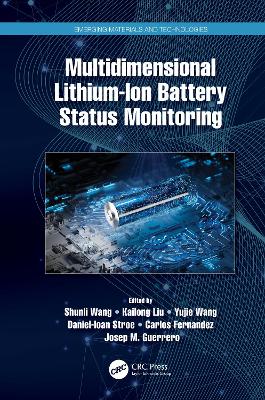Handbook of Superconductivity
 portes grátis
portes grátis
Handbook of Superconductivity
Characterization and Applications, Volume Three
Cardwell, David A.; Braginski, Aleksander; Larbalestier, David C.
Taylor & Francis Inc
07/2022
858
Dura
Inglês
9781439817360
15 a 20 dias
2204
Descrição não disponível.
Foreword. Preface. Acknowledgements. Editors-in-Chief. Contributors. Part G Characterization and Modelling Techniques. G1 Introduction to Section G1: Structure/Microstructure. G1.1 X-Ray Studies: Chemical Crystallography. G1.2 X-Ray Studies: Phase Transformations and Microstructure Changes. G1.3 Transmission Electron Microscopy. G1.4 An Introduction to Digital Image Analysis of Superconductors. G1.5 Optical Microscopy. G1.6 Neutron Techniques: Flux-Line Lattice. G2 Introduction to Section G2: Measurement and Interpretation of Electromagnetic Properties. G2.1 Electromagnetic Properties of Superconductors. G2.2 Numerical Models of the Electromagnetic Behavior of Superconductors. G2.3 DC Transport Critical Currents. G2.4 Characterisation of the Transport Critical Current Density for Conductor Applications. G2.5 Magnetic Measurements of Critical Current Density, Pinning, and Flux Creep. G2.6 AC Susceptibility. G2.7 AC Losses in Superconducting Materials, Wires, and Tapes. G2.8 Characterization of Superconductor Magnetic Properties in Crossed Magnetic Fields. G2.9 Microwave Impedance. G2.10 Local Probes of Magnetic Field Distribution. G2.11 Some Unusual and Systematic Properties of Hole-Doped Cuprates in the Normal and Superconducting States. G3 Introduction to Section G3: Thermal, Mechanical, and Other Properties. G3.1 Thermal Properties: Specific Heat. G3.2 Thermal Properties: Thermal Conductivity. G3.3 Thermal Properties: Thermal Expansion. G3.4 Mechanical Properties. G3.5 Magneto-Optical Characterization Techniques. Part H Applications. H1 Introduction to Large Scale Applications. H1.1 Electromagnet Fundamentals. H1.2 Superconducting Magnet Design. H1.3 MRI Magnets. H1.4 High-Temperature Superconducting Current Leads. H1.5 Cables. H1.6 AC and DC Power Transmission. H1.7 Fault-Current Limiters. H1.8 Energy Storage. H1.9 Transformers. H1.10 Electrical Machines Using HTS Conductors. H1.11 Electrical Machines Using Bulk HTS. H1.12 Homopolar Motors. H1.13 Magnetic Separation. H1.14 Superconducting Radiofrequency Cavities. H2 Introduction to Section H2: High-Frequency Devices. H2.1 Microwave Resonators and Filters. H2.2 Transmission Lines. H2.3 Antennae. H3 Introduction to Section H3: Josephson Junction Devices. H3.1 Josephson Effects. H3.2 SQUIDs. H3.3 Biomagnetism. H3.4 Nondestructive Evaluation. H3.5 Digital Electronics. H3.6 Superconducting Analog-to-Digital Converters. H3.7 Superconducting Qubits. H4 Introduction to Radiation and Particle Detectors that Use Superconductivity. H4.1 Superconducting Tunnel Junction Radiation Detectors. H4.2 Transition-Edge Sensors. H4.3 Superconducting Materials for Microwave Kinetic Inductance Detectors. H4.4 Metallic Magnetic Calorimeters. H4.5 Optical Detectors and Sensors. H4.6 Low-Noise Superconducting Mixers for the Terahertz Frequency Range. H4.7 Applications: Metrology. Glossary. Index.
Este título pertence ao(s) assunto(s) indicados(s). Para ver outros títulos clique no assunto desejado.
Fault Current Limiters;YBCO Film;Cuprate Superconductors;Critical Current Density;Dc Superconducting QUantum Interference Device;JJ;HTS Material;Flux Pinning;Kinetic Inductance;Superconducting Magnets;Flux Line;Superconducting Materials;Iron Based Superconductor;Josephson Effects;Transition Edge Sensors;High Temperature Cuprate Superconductors;Squid System;AC Loss;Critical State Model;Squid Sensor;Superconducting Wire;Hall Probe;CuO Chain;Vortex Lattice;YBCO Superconductor
Foreword. Preface. Acknowledgements. Editors-in-Chief. Contributors. Part G Characterization and Modelling Techniques. G1 Introduction to Section G1: Structure/Microstructure. G1.1 X-Ray Studies: Chemical Crystallography. G1.2 X-Ray Studies: Phase Transformations and Microstructure Changes. G1.3 Transmission Electron Microscopy. G1.4 An Introduction to Digital Image Analysis of Superconductors. G1.5 Optical Microscopy. G1.6 Neutron Techniques: Flux-Line Lattice. G2 Introduction to Section G2: Measurement and Interpretation of Electromagnetic Properties. G2.1 Electromagnetic Properties of Superconductors. G2.2 Numerical Models of the Electromagnetic Behavior of Superconductors. G2.3 DC Transport Critical Currents. G2.4 Characterisation of the Transport Critical Current Density for Conductor Applications. G2.5 Magnetic Measurements of Critical Current Density, Pinning, and Flux Creep. G2.6 AC Susceptibility. G2.7 AC Losses in Superconducting Materials, Wires, and Tapes. G2.8 Characterization of Superconductor Magnetic Properties in Crossed Magnetic Fields. G2.9 Microwave Impedance. G2.10 Local Probes of Magnetic Field Distribution. G2.11 Some Unusual and Systematic Properties of Hole-Doped Cuprates in the Normal and Superconducting States. G3 Introduction to Section G3: Thermal, Mechanical, and Other Properties. G3.1 Thermal Properties: Specific Heat. G3.2 Thermal Properties: Thermal Conductivity. G3.3 Thermal Properties: Thermal Expansion. G3.4 Mechanical Properties. G3.5 Magneto-Optical Characterization Techniques. Part H Applications. H1 Introduction to Large Scale Applications. H1.1 Electromagnet Fundamentals. H1.2 Superconducting Magnet Design. H1.3 MRI Magnets. H1.4 High-Temperature Superconducting Current Leads. H1.5 Cables. H1.6 AC and DC Power Transmission. H1.7 Fault-Current Limiters. H1.8 Energy Storage. H1.9 Transformers. H1.10 Electrical Machines Using HTS Conductors. H1.11 Electrical Machines Using Bulk HTS. H1.12 Homopolar Motors. H1.13 Magnetic Separation. H1.14 Superconducting Radiofrequency Cavities. H2 Introduction to Section H2: High-Frequency Devices. H2.1 Microwave Resonators and Filters. H2.2 Transmission Lines. H2.3 Antennae. H3 Introduction to Section H3: Josephson Junction Devices. H3.1 Josephson Effects. H3.2 SQUIDs. H3.3 Biomagnetism. H3.4 Nondestructive Evaluation. H3.5 Digital Electronics. H3.6 Superconducting Analog-to-Digital Converters. H3.7 Superconducting Qubits. H4 Introduction to Radiation and Particle Detectors that Use Superconductivity. H4.1 Superconducting Tunnel Junction Radiation Detectors. H4.2 Transition-Edge Sensors. H4.3 Superconducting Materials for Microwave Kinetic Inductance Detectors. H4.4 Metallic Magnetic Calorimeters. H4.5 Optical Detectors and Sensors. H4.6 Low-Noise Superconducting Mixers for the Terahertz Frequency Range. H4.7 Applications: Metrology. Glossary. Index.
Este título pertence ao(s) assunto(s) indicados(s). Para ver outros títulos clique no assunto desejado.
Fault Current Limiters;YBCO Film;Cuprate Superconductors;Critical Current Density;Dc Superconducting QUantum Interference Device;JJ;HTS Material;Flux Pinning;Kinetic Inductance;Superconducting Magnets;Flux Line;Superconducting Materials;Iron Based Superconductor;Josephson Effects;Transition Edge Sensors;High Temperature Cuprate Superconductors;Squid System;AC Loss;Critical State Model;Squid Sensor;Superconducting Wire;Hall Probe;CuO Chain;Vortex Lattice;YBCO Superconductor







